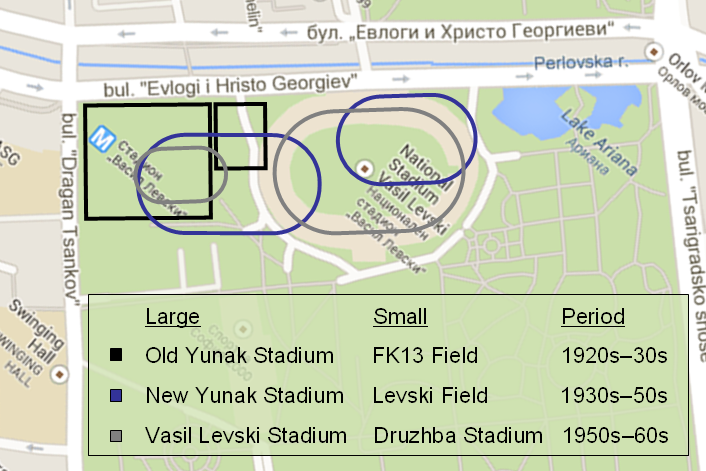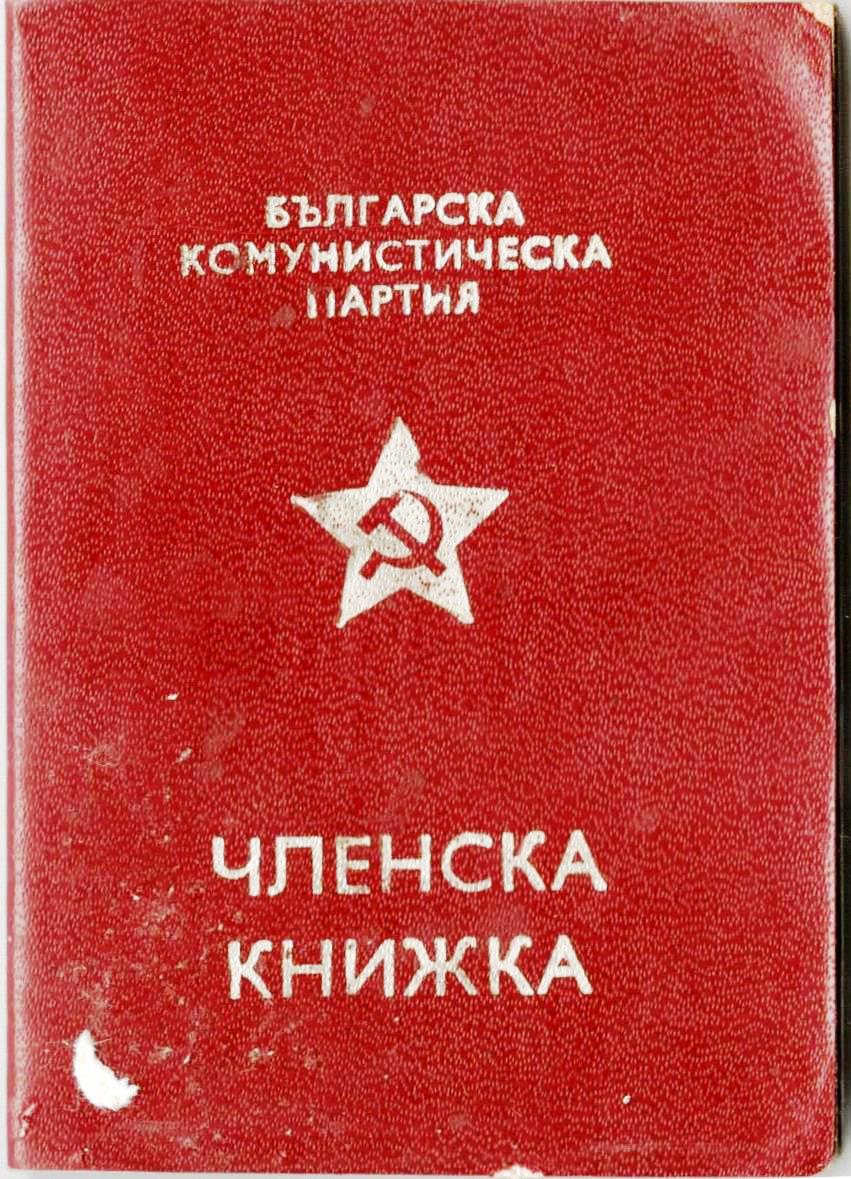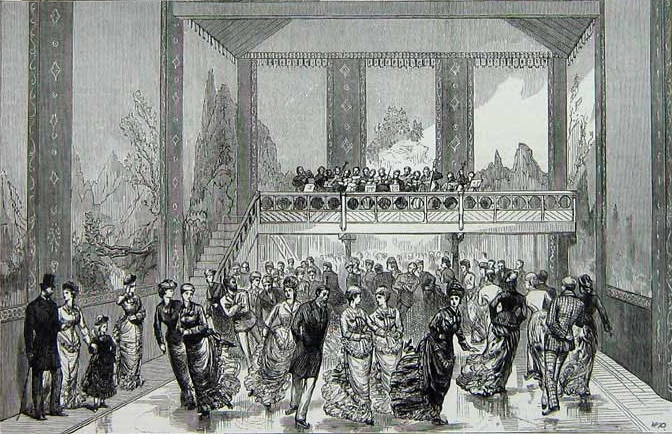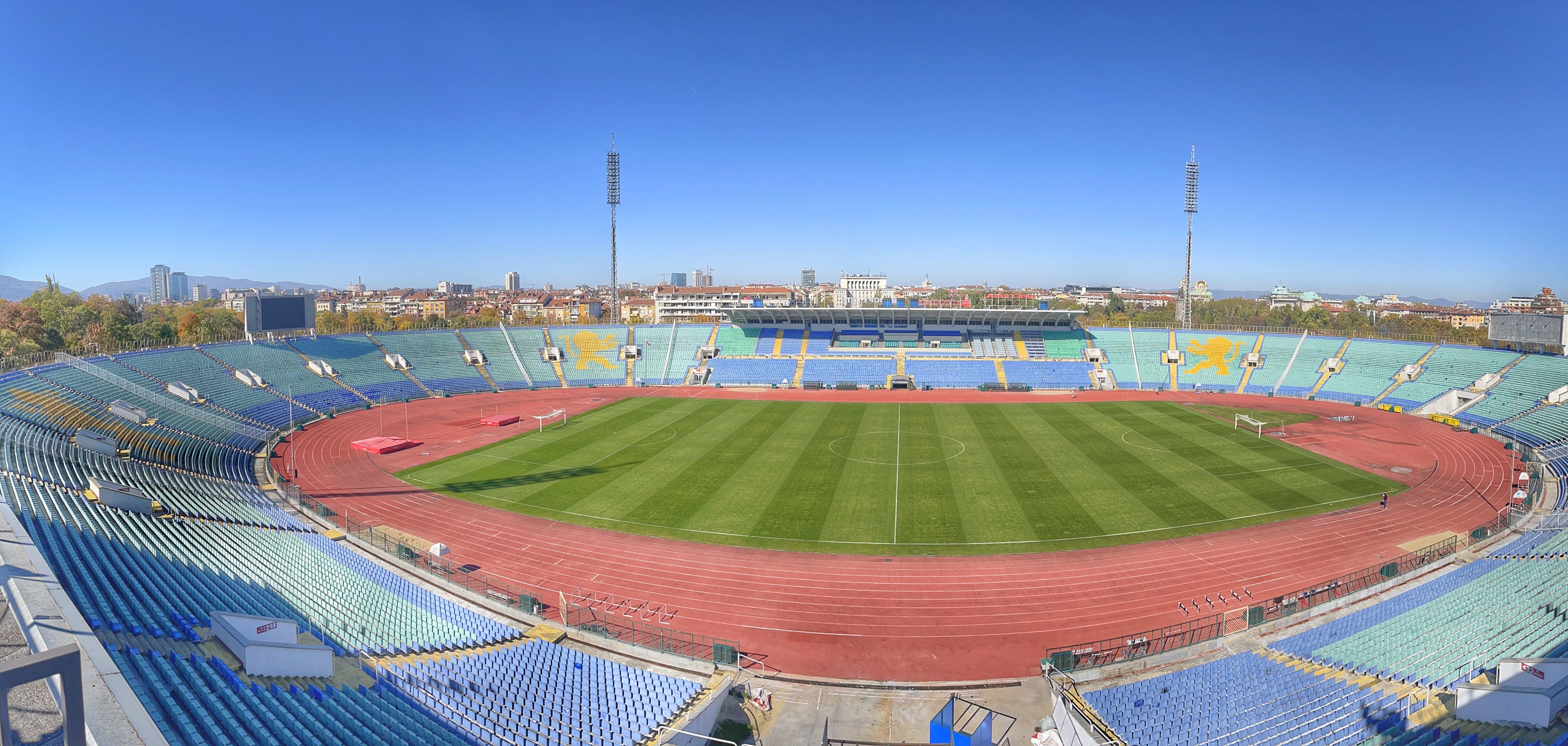|
Yunak Stadium
Yunak Stadium (Bulgarian: ''Стадион Юнак'', ''Stadion Yunak''), was a multi-use stadium in central Sofia, Bulgaria. It was located at the north-western corner of Knyaz Boris's Garden, on the southern bank of the Perlovska river. It was the largest stadium in Bulgaria until the middle of the 20th century, with a capacity of 35,000 spectators, and was initially used as the main stadium for Bulgaria national football team matches. The pitch was almost exactly square-shaped, with four straight rows of stands on all sides. The stadium is named after the Yunak sports societies which formed in Bulgaria in the late 19th century, themselves named after the word "yunak", meaning a strong young man. In the 1920s–30s, immediately to the northeast of Yunak stadium, was built the smaller Levski Field, the home ground of SK Levski. In the 1950s, the BCP decided to build a new, larger national stadium on the site of Levski Field. As the new stadium would infringe on the nort ... [...More Info...] [...Related Items...] OR: [Wikipedia] [Google] [Baidu] |
Sofia
Sofia ( ; bg, София, Sofiya, ) is the Capital city, capital and List of cities and towns in Bulgaria, largest city of Bulgaria. It is situated in the Sofia Valley at the foot of the Vitosha mountain in the western parts of the country. The city is built west of the Iskar (river), Iskar river, and has many mineral springs, such as the Sofia Central Mineral Baths. It has a humid continental climate. Being in the centre of the Balkans, it is midway between the Black Sea and the Adriatic Sea, and closest to the Aegean Sea. Known as Serdica in Late antiquity, Antiquity and Sredets in the Middle Ages, Sofia has been an area of List of oldest continuously inhabited cities, human habitation since at least 7000 BC. The recorded history of the city begins with the attestation of the conquest of Serdica by the Roman Republic in 29 BC from the Celtic settlement of Southeast Europe, Celtic tribe Serdi. During the decline of the Roman Empire, the city was raided by Huns, Visigoths, P ... [...More Info...] [...Related Items...] OR: [Wikipedia] [Google] [Baidu] |
Bulgarian Communist Party
The Bulgarian Communist Party (BCP; bg, Българска Комунистическа Партия (БКП), Balgarska komunisticheska partiya (BKP)) was the founding and ruling party of the People's Republic of Bulgaria from 1946 until 1989, when the country ceased to be a socialist state. The party had dominated the Fatherland Front, a coalition that took power in 1944, late in World War II, after it led a coup against Bulgaria's tsarist regime in conjunction with the Red Army's crossing the border. It controlled its armed forces, the Bulgarian People's Army. The BCP was organized on the basis of democratic centralism, a principle introduced by the Russian Marxist scholar and leader Vladimir Lenin, which entails democratic and open discussion on policy on the condition of unity in upholding the agreed upon policies. The highest body of the BCP was the Party Congress, convened every fifth year. When the Party Congress was not in session, the Central Committee was the hig ... [...More Info...] [...Related Items...] OR: [Wikipedia] [Google] [Baidu] |
History Of Sofia
The history of Sofia, Bulgaria's capital and largest city, spans thousands of years from ancient history, Antiquity to modern times, during which the city has been a commercial, industrial, cultural and economic centre in its region and the Balkans. Antiquity A Neolithic settlement discovered in Slatina, Sofia, Slatina, north-eastern Sofia, is dated to be from the 6th millennium BC. Another Neolithic settlement around the National Art Gallery (Bulgaria), National Art Gallery is traced to the 3rd–4th millennium BC. The earliest tribes who settled were the Thracians, Thracian Tilataei. In the 500s BC, the area became part of a Thracians, Thracian union, the Odrysian kingdom. In 339 BC Philip II of Macedon destroyed and ravaged the town. The Celts, Celtic tribe Serdi gave their name to the city. The earliest mention of the city comes from an Athens, Athenian inscription from the 1st century BC, attesting ''Astiu ton Serdon'', i.e. city of the Serdi. A local inscription a ... [...More Info...] [...Related Items...] OR: [Wikipedia] [Google] [Baidu] |
Sports Venues In Sofia
Sport pertains to any form of competitive physical activity or game that aims to use, maintain, or improve physical ability and skills while providing enjoyment to participants and, in some cases, entertainment to spectators. Sports can, through casual or organized participation, improve participants' physical health. Hundreds of sports exist, from those between single contestants, through to those with hundreds of simultaneous participants, either in teams or competing as individuals. In certain sports such as racing, many contestants may compete, simultaneously or consecutively, with one winner; in others, the contest (a ''match'') is between two sides, each attempting to exceed the other. Some sports allow a "tie" or "draw", in which there is no single winner; others provide tie-breaking methods to ensure one winner and one loser. A number of contests may be arranged in a tournament producing a champion. Many sports leagues make an annual champion by arranging games in a r ... [...More Info...] [...Related Items...] OR: [Wikipedia] [Google] [Baidu] |
Defunct Football Venues In Bulgaria
{{Disambiguation ...
Defunct (no longer in use or active) may refer to: * ''Defunct'' (video game), 2014 * Zombie process or defunct process, in Unix-like operating systems See also * * :Former entities * End-of-life product * Obsolescence Obsolescence is the state of being which occurs when an object, service, or practice is no longer maintained or required even though it may still be in good working order. It usually happens when something that is more efficient or less risky r ... [...More Info...] [...Related Items...] OR: [Wikipedia] [Google] [Baidu] |
Boris III
Boris III ( bg, Борѝс III ; Boris Treti; 28 August 1943), originally Boris Klemens Robert Maria Pius Ludwig Stanislaus Xaver (Boris Clement Robert Mary Pius Louis Stanislaus Xavier) , was the Tsar of the Kingdom of Bulgaria from 1918 until his death in 1943. The eldest son of Ferdinand I, Boris assumed the throne upon the abdication of his father in the wake of Bulgaria's defeat in World War I. Under the 1919 Treaty of Neuilly, Bulgaria was forced to, amongst other things, cede various territories, pay crippling war reparations, and greatly reduce the size of its military. That same year, Aleksandar Stamboliyski of the agrarian Bulgarian Agrarian National Union became prime minister. After Stamboliyski was overthrown in a coup in 1923, Boris recognized the new government of Aleksandar Tsankov, who harshly suppressed the Bulgarian Communist Party and led the nation through a brief border war with Greece. Tsankov was removed from power in 1926, and a series of prime ministers ... [...More Info...] [...Related Items...] OR: [Wikipedia] [Google] [Baidu] |
Vasil Levski Stadium Metro Station
Vasil Levski Stadium Metro Station ( bg, Метростанция „Стадион „Васил Левски“) is a station on the Sofia Metro in Bulgaria. It was introduced into service on 8 May 2009. It serves the Vasil Levski National Stadium. The architectural layout was created by architects Kr. Andreev and D. Mushev. Automatic Platform Screen Door (APSD) In August 2020, testing of the first automatic Platform screen doors (Rope-type Screen Door) commenced at the Vasil Levski Stadium Metro Station of the Sofia Metro. These safety barriers are intended for greater safety of passengers. Automatic partition doors on the existing Line 1, in addition to the Vasil Levski Stadium Metro Station, are also being built at the Opalchenska Metro Station. By 2022, this RSD system will be implemented at first 12 stations of the Line 1 and Line 2 of the Sofia Metro The Sofia Metro ( bg, Софийски метрополитен, translit=Sofijski Metropoliten, also colloquially cal ... [...More Info...] [...Related Items...] OR: [Wikipedia] [Google] [Baidu] |
Sofia Metro
The Sofia Metro ( bg, Софийски метрополитен, translit=Sofijski Metropoliten, also colloquially called ) is the rapid transit network servicing the Bulgarian capital city Sofia. It began operation on 28 January 1998. , the Sofia Metro consists of four interconnected lines, serving 47 stations, with a total route length of being among the top 20 of the most extensive European metro systems, ranking 19th as of 2020. The Metro links the densely populated districts of Lyulin – Mladost (M1 line – Red) and Nadezhda – Lozenets (M2 line – Blue), and serves the Sofia Airport. History Planned since the 1960s, construction of the metro has started in 80s with demolishing of significant number of buildings. At the beginning of 90s the construction has stopped because of lack of funds. Another factor was the depth at which the construction works had to be carried out: being one of the oldest cities in Europe, Sofia contains many historical layers underneath its c ... [...More Info...] [...Related Items...] OR: [Wikipedia] [Google] [Baidu] |
Ice Rink
An ice rink (or ice skating rink) is a frozen body of water and/or an artificial sheet of ice created using hardened chemicals where people can ice skate or play winter sports. Ice rinks are also used for exhibitions, contests and ice shows. The growth and increasing popularity of ice skating during the 1800s marked a rise in the deliberate construction of ice rinks in numerous areas of the world. The word "rink" is a word of Scottish origin meaning, "course" used to describe the ice surface used in the sport of curling, but was kept in use once the winter team sport of ice hockey became established. There are two types of ice rinks in prevalent use today: natural ice rinks, where freezing occurs from cold ambient temperatures, and artificial ice rinks (or mechanically frozen), where a coolant produces cold temperatures in the surface below the water, causing the water to freeze. There are also synthetic ice rinks where skating surfaces are made out of plastics. Besides ... [...More Info...] [...Related Items...] OR: [Wikipedia] [Google] [Baidu] |
Georgi Asparuhov Stadium
Georgi Asparuhov Stadium ( bg, Стадион „Георги Аспарухов“), due to sponsorship currently known as Vivacom Arena – Georgi Asparuhov ( bg, Виваком Арена – Георги Аспарухов), nicknamed Gerena ( bg, Герена, meaning "the flood plain"), is a multi-purpose stadium situated in the Suhata reka neighbourhood of the Bulgarian capital Sofia. Named after the best Bulgarian footballer of the 20th century Georgi Asparuhov (1943–1971), it has been the home ground of Bulgarian association football club Levski Sofia since its opening in 1963. History Origin Levski Sofia previously played their home matches at two different stadiums before the construction of their current stadium. Between 1936 and 1949 the club had its own football ground which was named '' Igrishte Levski'' (Levski Football Field; bg, Игрище „Левски“) and it was situated in the city centre at the place of the current Vasil Levski National Stadiu ... [...More Info...] [...Related Items...] OR: [Wikipedia] [Google] [Baidu] |
Vasil Levski National Stadium
Vasil Levski National Stadium ( bg, Национален стадион „Васил Левски“), named after Bulgarian national hero and revolutionary Vasil Levski (1837–1873), is the country's second largest stadium. The stadium has 43,230 seats and is located in the centre of Sofia, on the territory of the city's oldest and most famous park - the Borisova gradina. The Bulgaria national football team's home matches and the Bulgarian Cup finals are held at the venue, as well as athletics competitions. It was used as the home venue for Levski Sofia's Champions League games, and is often used for important derbies between the big clubs from Sofia, instead of their own home stadiums. History Vasil Levski National Stadium was officially opened in 1953, extended in 1966 and renovated in 2002. Prior to their demolition by the Communist authorities during the 1940s and 50s, two other stadiums stood on the ground where the current national stadium lies. One of those was Le ... [...More Info...] [...Related Items...] OR: [Wikipedia] [Google] [Baidu] |
Levski Field
Levski Playing Field ( bg, Игрище „Левски“, Igrishte Levski) was the original stadium of Levski Sofia football club. It was commissioned in 1924 and completed in 1934. In 1944 it had a seating capacity of 10,000. The stadium was demolished after 1949 by the authorities to make place for the Vasil Levski National Stadium Vasil Levski National Stadium ( bg, Национален стадион „Васил Левски“), named after Bulgarian national hero and revolutionary Vasil Levski (1837–1873), is the country's second largest stadium. The stadium has 43, .... References Sports venues in Sofia PFC Levski Sofia Sports venues completed in 1934 1934 establishments in Bulgaria {{Bulgaria-sports-venue-stub ... [...More Info...] [...Related Items...] OR: [Wikipedia] [Google] [Baidu] |








